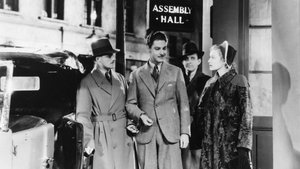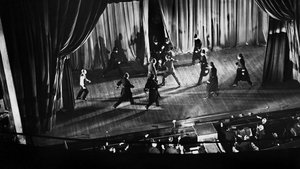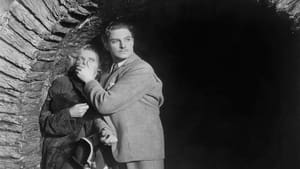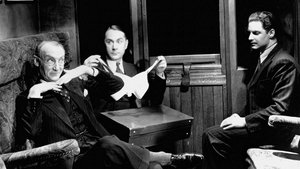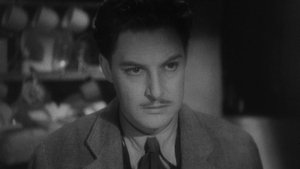Contact: [email protected]
Video Sources 0 Views
- Watch trailer
- The 39 Steps Colorized


Synopsis
[ez-toc]





Introduction
In the vast landscape of cinema, where black-and-white masterpieces stand as pillars of the bygone era, a new trend has emerged – colorized movies. Imagine witnessing the charm and allure of old classics in vibrant hues, breathing life into scenes frozen in time. The evolution of colorization technology has given rise to a unique way of experiencing cinema, and “The 39 Steps Colorized 1935” is a shining example of this transformative journey.
Read Media File Transfer Agreement: Terms and Conditions
Read FAQ
The Evolution of Colorization in the Film Industry
The film industry has undergone remarkable technological advancements, with colorization playing a pivotal role in preserving and reviving old movies. The transition from black-and-white to color has been both a technical and artistic feat. The preservation of classic films ensures that future generations can appreciate the cinematic brilliance of the past.
Colorization technology has a fascinating history, dating back to the early 20th century. Initially, the process was labor-intensive, relying on hand-coloring each frame. However, with the advent of digital technology, the process became more sophisticated, allowing for a more seamless integration of color into black-and-white films.
Pros and Cons of Adding Colors to Black-and-White Films
As with any innovation, the introduction of color to old classics comes with its own set of pros and cons. On the positive side, colorization offers modern audiences a chance to connect with and appreciate classic films. It breathes new life into these timeless stories, making them more accessible to a broader audience.
However, controversies surround the authenticity of colorized movies. Film purists argue that altering the original black-and-white aesthetic compromises the artistic intent of the filmmakers. The debate over whether colorization enhances or distorts the viewing experience remains a hot topic among cinephiles.
Examining the Success of Colorized Version: The 39 Steps Colorized (1935)
Now, let’s turn our attention to “The 39 Steps Colorized,” a 1935 classic directed by the master of suspense, Alfred Hitchcock. Starring Robert Donat and Madeleine Carroll, this British spy thriller is a testament to Hitchcock’s influence on the thriller genre.
The plot revolves around Richard Hannay (Robert Donat), an ordinary man caught in a web of espionage and intrigue after a mysterious woman, played by Madeleine Carroll, involves him in a conspiracy. Adapted from John Buchan’s novel, the film showcases Hitchcock’s trademark suspense and storytelling prowess.
The colorized version of “The 39 Steps Colorized” not only pays homage to the original but also introduces a new generation to the gripping narrative in a visually engaging manner. The performances of Donat and Carroll, coupled with Hitchcock’s directorial brilliance, make this film a timeless classic.
Restoring the Visual Splendor: How Colorization Enhances the Cinematic Journey
The decision to colorize “The 39 Steps Colorized” was driven by the desire to offer a fresh perspective to a modern audience. The rationale behind colorization goes beyond mere aesthetic appeal; it aims to provide a new cinematic experience while preserving the essence of the original.
The process of colorizing old movies involves meticulous attention to detail. Technicians work to recreate accurate colors, ensuring that the visual elements align with the era in which the film was originally made. While some argue that this compromises the artistic integrity of the film, proponents assert that colorization serves as a gateway for younger audiences to appreciate classic cinema.
The debates over artistic integrity and historical accuracy in colorized films are complex. However, the goal remains clear – to breathe new life into old classics and make them relevant to contemporary viewers.
Preserving Film Heritage: The Significance of Old Classics
Classic thrillers like “The 39 Steps Colorized” hold a special place in cinematic history. They transport audiences to a bygone era, offering a glimpse into the storytelling techniques and cultural nuances of the time. The nostalgia and charm of old movies are irreplaceable, contributing to the rich tapestry of film heritage.
These classics are not just entertainment; they are windows into the past, reflecting the social, political, and cultural landscapes of their respective eras. Preserving them is not only a matter of nostalgia but also a duty to ensure that future generations can appreciate the roots of modern cinema.
Striking a Balance: Artistry, Preservation, and Innovation in Colorization Debate
The debate surrounding colorization often pits film purists against those embracing technological innovation. Purists argue that altering the original black-and-white format disrupts the intended artistic expression of the filmmakers. However, there’s a middle ground that encourages embracing a variety of cinematic experiences.
Film is a dynamic art form, and while some may prefer the authenticity of black-and-white, others find value in the enhanced visual appeal offered by colorization. Striking a balance between artistry, preservation, and innovation is essential to fostering a diverse and inclusive cinematic landscape.
Recommended Colorized Classic Movies to Watch
For those venturing into the world of colorized classics, “The 39 Steps Colorized 1935” serves as an excellent starting point. However, the cinematic treasure trove doesn’t end there. Other recommended colorized classic movies include “Casablanca,” “Gone with the Wind,” and “It Happened One Night.” Each of these films brings its own unique charm when seen through the lens of colorization.
Conclusion
In conclusion, the colorization of old classics like “The 39 Steps Colorized” adds a new layer to the cinematic experience. It opens the door for a broader audience to appreciate the storytelling brilliance of the past while sparking conversations about the preservation and innovation within the film industry.
As we navigate the dynamic landscape of cinema, it’s crucial to embrace diverse ways of appreciating both black-and-white and color films. Whether through colorization, restoration, or watching them in their original formats, each approach offers a unique lens through which we can explore the rich history of cinema.
“The 39 Steps Colorized 1935” stands as a testament to the successful revitalization of an old classic. It encourages us to celebrate the timeless stories that transcend generations, reminding us that the magic of cinema knows no bounds, even when bathed in the vibrant hues of modern technology.
